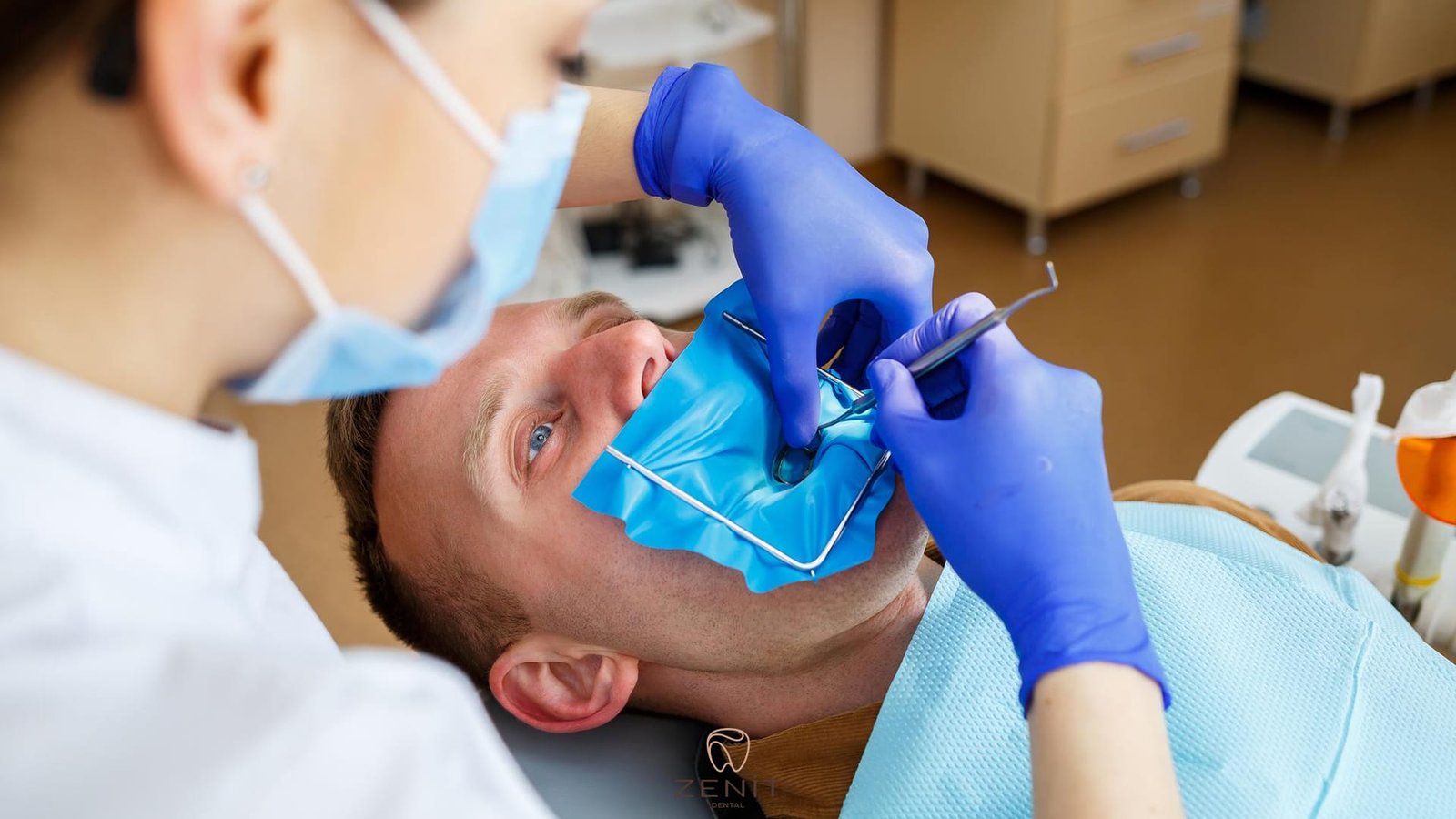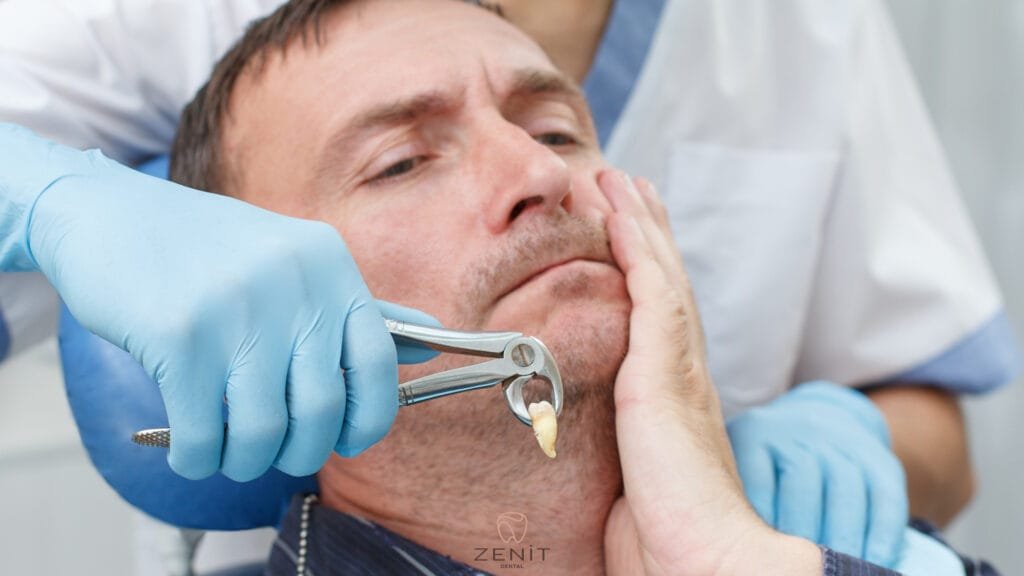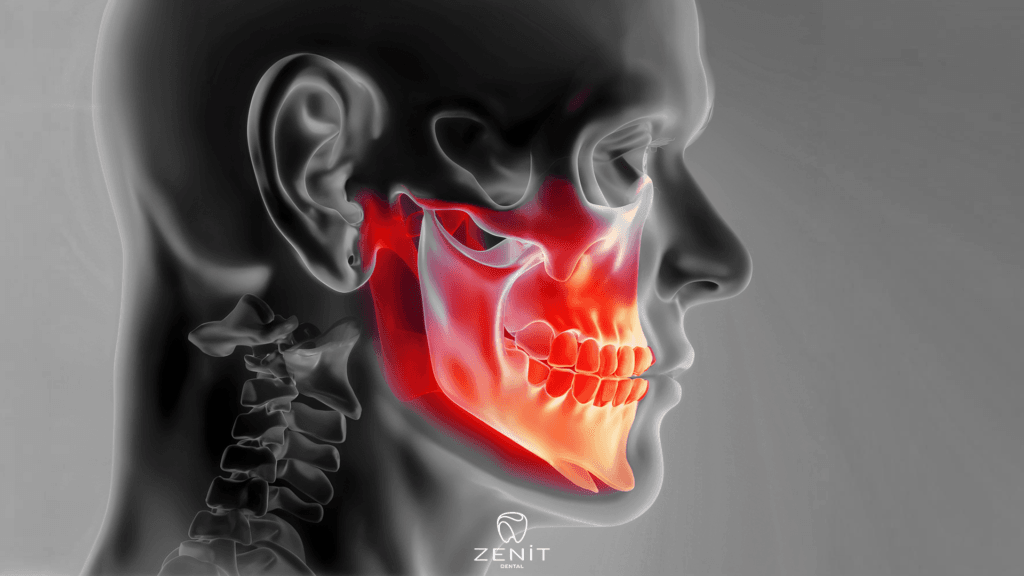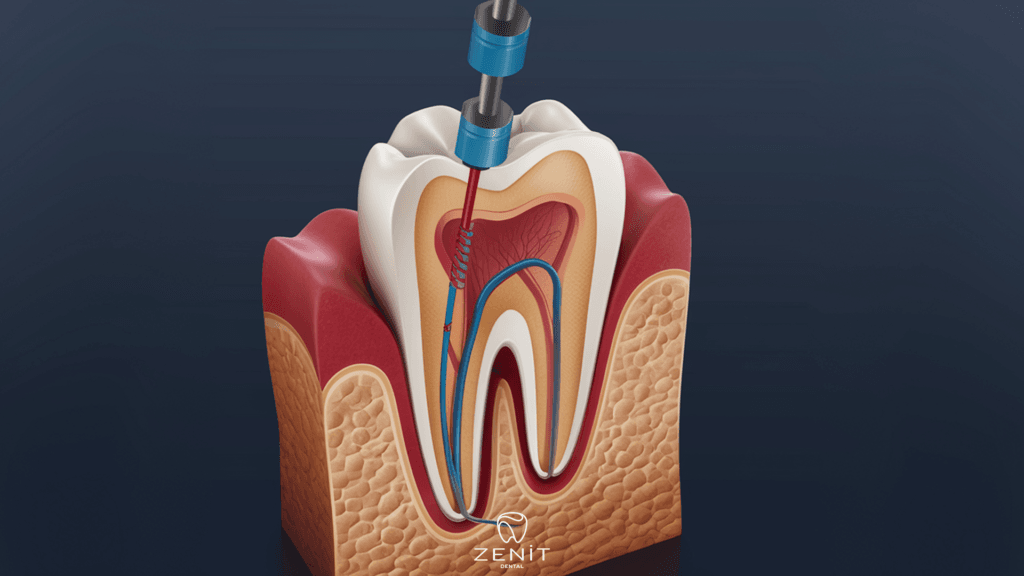Extraction of Embedded Tooth
Embedded teeth are those that are located beneath the gum tissue or other teeth and fail to emerge properly into their correct position. Typically, the most common embedded teeth are wisdom teeth, which are the most common type of embedded teeth. However, other teeth can also become embedded. Embedded teeth often lead to pain, discomfort, and other oral health issues. Therefore, their removal is often recommended.
The extraction of embedded teeth is typically performed by a dentist or an oral surgeon. The procedure is carried out under local anesthesia and is usually quite swift. However, in some cases, surgical intervention may be necessary, especially if the tooth’s eruption path is obstructed by other teeth or tissues.
What Is an Impacted Tooth?
Impacted teeth are those that are often trapped beneath or above other teeth, due to reasons such as not aligning with the natural flow of the dental arch or narrow jaw structure, and are completely or partially hidden under the gum tissue. This condition typically arises during adolescence or early adulthood and can lead to various oral health issues.
The most commonly impacted teeth are the third molars, commonly referred to as “wisdom teeth.” However, any tooth can become impacted, and teeth that fail to erupt above the gumline or remain completely under the gum tissue are also considered impacted.
Impacted teeth usually result from anatomical reasons such as narrow jaw structure, dental misalignment, or insufficient space within the jawbone. This can prevent the tooth from assuming its correct position and consequently affect the positioning of other teeth. Impacted teeth can also increase the risk of infection, gum inflammation, tooth decay, and damage to the jawbone.
Treatment is typically determined by a dentist and may vary depending on the situation. Extracting impacted teeth is often necessary because they can cause harm to surrounding teeth and gums or increase the risk of infection. The dentist will determine the appropriate treatment plan based on the tooth’s position and other factors, which may include tooth extraction, surgical removal, or other orthodontic treatments. Treatment is usually aimed at reducing discomfort and maintaining the healthy positioning of the teeth.
Symptoms of Impacted Teeth
The signs indicating the presence of impacted teeth can vary from person to person and are often influenced by the individual’s dental and jaw structure, as well as the positioning of the teeth. However, there are some common symptoms that may suggest the presence of impacted teeth:
Pain or Sensitivity: An impacted tooth can cause pain or sensitivity by exerting pressure on other teeth. This pain is typically felt at the site of the tooth’s eruption or around it.
Swelling and Redness of the Gum Tissue: An impacted tooth can lead to swelling and redness of the gum tissue surrounding it. This may be associated with irritation of the gum tissue beneath the tooth and an increased risk of infection.
Jaw Pain or Stiffness: Impacted teeth can affect the jaw structure and cause pain or stiffness in the jaw area. This may occur due to pressure on the normal positions of the teeth or affecting the jaw joint.
Displacement of Other Teeth: Impacted teeth can alter the positions of surrounding teeth or lead to the development of crooked teeth. This can result from disruption of the natural alignment of the teeth and disturb oral harmony.
While these symptoms typically indicate the presence of impacted teeth, it’s important to consult a dentist in case of any pain or issues. A dentist can confirm the diagnosis of impacted teeth and recommend appropriate treatment to help alleviate your discomfort.

Embedded Tooth Extraction Procedure
Embedded tooth extraction is a procedure typically performed by a dentist or oral surgeon and is often done under local anesthesia. The procedure can vary depending on the location of the embedded tooth, jaw structure, and the condition of the tooth, and may be more complex in some cases.
The procedure generally involves the following steps:
Anesthesia: Before the procedure, the dentist or surgeon administers local anesthesia to numb the area of the extraction. This ensures that the patient does not feel any pain or discomfort. In more complex cases, sedation or general anesthesia may also be used.
Preparation of the Surgical Site: After anesthesia is applied, the dentist or surgeon cleans and sterilizes the surgical site. This is important to reduce the risk of infection.
Incision and Flap Creation: The dentist makes an incision in the gum tissue surrounding the embedded tooth and may need to create a flap to access the tooth. This provides the necessary access to remove the embedded tooth.
Extraction of the Tooth: The dentist uses special instruments to extract the embedded tooth. Depending on the position of the embedded tooth, they may sometimes need to section the tooth or remove it by cutting through surrounding tissues.
Wound Care and Suturing: After the tooth extraction procedure, the surgical site is usually closed with stitches. This supports wound healing and reduces the risk of infection.
Recovery Process: Following the procedure, the patient is typically provided with information about the recovery process. During this time, specific guidelines should be followed for the healing of the gum tissue and surrounding tissues. Additionally, medications necessary for pain management and control of other symptoms may be prescribed.
While embedded tooth extraction procedures generally proceed smoothly, it’s important for patients to contact a dentist if any complications arise.
Aftercare for Impacted Tooth Extraction
Post-operative care following impacted tooth extraction is crucial for ensuring successful healing and preventing complications. Here is a more detailed explanation of what to consider after an impacted tooth extraction:
Take Medications Regularly: It’s important to take the pain relievers and antibiotics prescribed by your dentist regularly to control pain and reduce the risk of infection. Take the medications as directed and at regular intervals.
Apply Cold Compress: To reduce swelling and pain that may occur after the procedure, you can apply a cold compress to the jaw area. Wrap an ice pack in a cloth and apply it to the jaw for 10-15 minutes at a time. Repeat this process at regular intervals within the first 24 hours.
Diet: It’s important to consume soft and liquid foods for the first few days after the procedure. Consuming hard or hot foods can cause discomfort and pain in the surgical area. Opt for nutritious and easily consumable foods such as soups, purees, and yogurts.
Oral Hygiene: After the procedure, it’s crucial to maintain good oral hygiene. Use a mouth rinse solution recommended by your dentist and brush your teeth gently. However, avoid touching the surgical area and brush your teeth without overdoing it.
Rest: After the procedure, prioritize rest and avoid heavy physical activities. This can help speed up the healing process and reduce the risk of potential complications. Additionally, keeping your head elevated while lying down for a certain period after the procedure can help reduce swelling.
Dentist Follow-Up: It’s important to visit your dentist for follow-up appointments after a certain period following the procedure. During these appointments, your healing process will be evaluated, and any problems can be detected and treated early.
With careful post-operative care and appropriate treatment, a smooth recovery process can generally be achieved after impacted tooth extraction. However, it’s important to consult a dentist immediately if you have any concerns or issues.

In summary
Impacted teeth can significantly impact dental health and may sometimes require extraction. Impacted tooth extraction is typically performed by a dentist or oral surgeon, and proper post-operative care is crucial. By following your dentist’s recommendations, you can experience a healthy recovery process. Remember, regular dental check-ups and good oral hygiene play a key role in preventing the formation of impacted teeth. Schedule an appointment today to maintain a healthy smile!
Extraction of Embedded Tooth Extraction of Embedded Tooth Extraction of Embedded Tooth Extraction of Embedded Tooth Extraction of Embedded Tooth Extraction of Embedded Tooth Extraction of Embedded Tooth Extraction of Embedded Tooth Extraction of Embedded Tooth Extraction of Embedded Tooth Extraction of Embedded Tooth Extraction of Embedded Tooth






